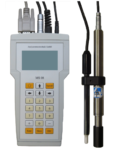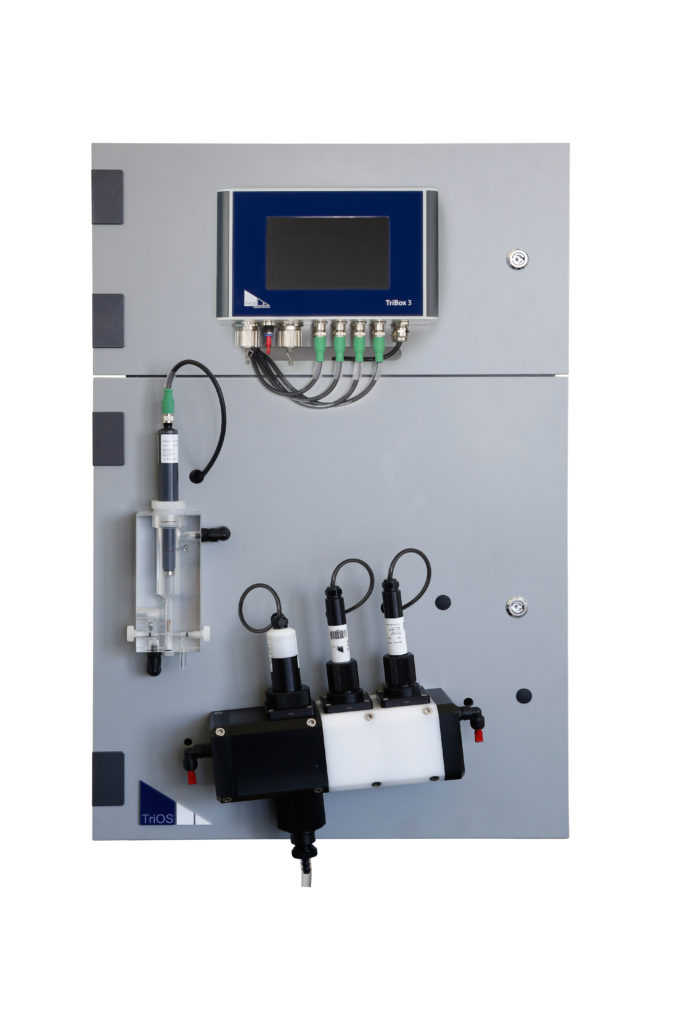MS08 H₂O₂
Measurement of dissolved hydrogen peroxide

Hydrogen peroxide has many applications in various fields such as medicine and food industry that use it for disinfection and sterilization, but also in the manufacture of cosmetics, paper industry and especially in the water treatment. H2O2 helps to eliminate organic pollutants. However, it is also involved in the phenomena of corrosions and the generation of oxidizing species very aggressive for the body. The control of the dissolved H2O2 concentration is an important parameter to adapt water treatment, in particular for the oxidation of H2S.
The accurate and reliable in-situ determination of this dissolved gas concentrations is possible with the MS08-H2O2 for online or portable measurements. The H2O2 micro-sensor allows fast measurement with very high local resolution. The MS08 multi-parameter system collects raw H2O2 informations and performs compensation calculations depen- ding on the temperature of the sample.
The MS08-H2S is designed for portable measurements (about 12 hours of battery life) and can also be connected to a 220 VAC power supply for continuous measurements.
Dissolved H2O2 measurement can be done with 2 probes type:
- MS08 device for a portable or laboratory measurement. This kit contains a data reading box and 2 linked probes. The titanium probe is composed of the H2O2 amperometric micro-sensor and the other probe is a temperature sensor.
- The CTD48 system for an online application in the environment. The probe contains several sensors in the head. The titanium protection cage integrates a H2O2 amperometric micro-sensor, a pH sensor and a temperature sensor. It can also contain a pressure sensor. Measured data are operated through the embedded electronic in the probe’s body. A CTD48M version that records data is also available.
Measurement principle
Amperometry :
The dissolved H2O2 passes through the gas permeable membrane. It diffuses to the working electrode where an electrochemical oxidation reaction takes place. The generated current, proportional to the hydrogen sulphide partial pressure, is measured by the probe.
This current, 0 to 400 picoamperes, is converted and operated by the MS08, the measurement data are compensated with temperature measurement. The diffusion rate of the gas in the electrolyte differs depending on the temperature, this parameter must be taken into account for precise measurements.
Applications
- Monitoring and protection of wastewater networks
- Control of H2O2 reagent injections
- industrial process control
- Staff protection before operations
Advantages
- Immersed measurement without sampling
- No interference with thurbidity
- Automatic temperature and pH compensation
- Portable / laboratory and continuous measurements
- Direct display of measurement data
- Extracting data to computier via USB
| Measurement principle | Amperometric measurement with T° compensation |
|---|---|
| Measurement ranges | - type I : 0,02 ... 10 % H₂O₂ - type S : other on request |
| Response time | T 90% 2 seconds |
| Accuracy | 1% of the measured value |
| H2O2 consumption | Negligible |
| Additionnal sensors | temperature |
| Interferences on measurement | no interference in salt water up to 40 g/l of salt no interference with presence of : carbon dioxide, oxygen, methane, hydrogen, ammonia, carbon monoxide, organic solvents (maximum 20% vol.), Acetic acid, sulphide of dimethyl, HCN and solid compounds |
| Micro-sensor H2O2 lifetime | 6 months in portable use, 10 in continuous (depends on stress by pH variations) |
| Power supply | 6 batteries Mignon / 220 VAC, charger supplied |
| Housing material | H2O2 probe - titanium / temperature sensor - plastic |
| Dimensions (d x L) | H2S probe - 17 mm x 205 mm / temperature - 12 mm x 120 mm |
| Interface | data display on integrated screen - H2O2 (mg/l) / T° values RS-232 / USB (option) to a computer, software not provided, free download type «HYPERTERMINAL» String ASCII / 2 seconds Conversion by the software for access to Lotus 1-2-3 or Excel calculation software |
| Maintenance | Distilled water cleaning of the measuring diaphragm after every use |
| Medium / sample temperature | 0 ... + 30 ° C (40 ° C possible with a specific calibration on request) |
Plug-and-play installation



